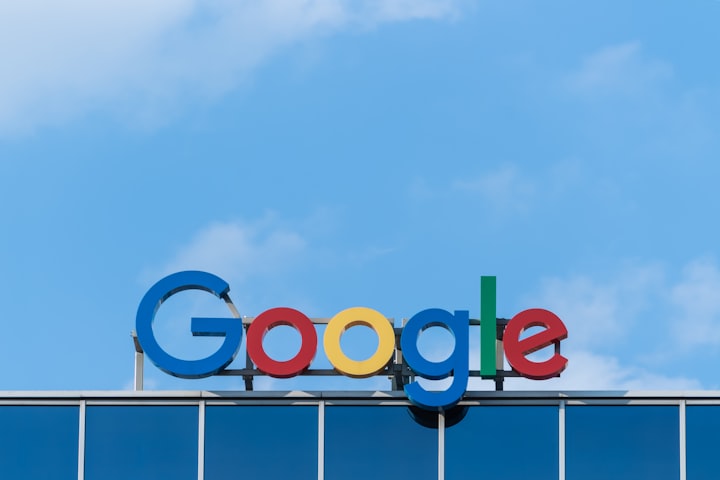Decoding Google's Energy Footprint: Unveiling the Environmental Impact of the Internet Giant
How Much Energy Is Consumed by Google?

Google, the world's foremost search engine, has seamlessly integrated itself into our daily lives. With over 3.5 billion searches conducted each day, it comes as no surprise that the energy consumption of this internet giant has become a topic of both interest and concern. Google's extensive infrastructure, which includes data centers, offices, and various facilities, demands a substantial amount of energy for its operations. Nonetheless, the company has taken significant strides in recent years to diminish its carbon footprint and augment its utilization of renewable energy sources.
One of the primary drivers of Google's energy consumption lies within its data centers. These centers serve as the backbone for processing billions of search queries, emails, and other online activities that transpire on a daily basis. Data centers have long been notorious for their high energy usage, as they necessitate a constant supply of electricity to power the servers and maintain an optimal temperature for the equipment. According to a study conducted by the U.S. Department of Energy, data centers accounted for approximately 2% of the total electricity consumption in the United States in 2014.
To address concerns regarding its environmental impact, Google has been actively striving to enhance the energy efficiency of its data centers. The company has pioneered advanced cooling systems that utilize outside air and water to regulate equipment temperatures, thereby reducing the need for energy-intensive air conditioning. Moreover, Google has harnessed the power of machine learning algorithms to optimize data center performance, resulting in increased operational efficiency and reduced energy consumption.
In addition to data center efficiency improvements, Google has made substantial commitments to renewable energy sources. In 2017, the company proudly announced that it had successfully matched 100% of its global electricity consumption with renewable energy purchases. This achievement was accomplished through long-term agreements with wind and solar projects, as well as the procurement of renewable energy certificates (RECs) to offset any remaining non-renewable energy usage.
It is important to note that Google's commitment to 100% renewable energy does not imply that all its facilities are exclusively powered by renewable sources such as wind and solar. Rather, Google's approach entails matching its overall energy consumption with an equivalent amount of renewable energy generation. This means that certain Google data centers and offices may still rely on the local power grid, which is likely a combination of renewable and non-renewable energy sources.
Continuing its dedication to reducing environmental impact, Google has invested in innovative technologies and projects aimed at advancing the transition to a sustainable energy future. In 2018, the company announced a collaboration with Dutch utility Eneco to establish a new solar park in the Netherlands, augmenting the renewable energy capacity available to Google's data center in the region. Additionally, Google has been exploring advanced energy storage systems, such as batteries and thermal storage, to facilitate the integration of more renewable energy into the grid and enhance operational reliability.
Maximizing Data Center Efficiency: Google's Focus on PUE
Efficiency and clean energy sourcing are vital factors for Google to achieve its sustainability goals, especially when it comes to their data centers. Overseeing this crucial aspect is Maud Texier, the head of energy development for data centers at Google.
One of the key metrics Google pays close attention to is PUE, or power usage effectiveness. PUE measures the ratio of energy consumed by the data center's computing equipment to the total energy utilized by the entire facility. A PUE value of 1 indicates that all the energy consumed is dedicated to the computing equipment alone. On the other hand, a PUE of 2 signifies that for each unit of energy utilized by the computing equipment, an additional unit is required for cooling and power distribution.
Back in 2008, Google's PUE stood at approximately 1.22. However, their most recent published PUE value, from the second quarter of 2021, was an impressive 1.1. To provide context, the Uptime Institute's 2021 Data Center Survey, a study referenced by Google, indicates that the average PUE for large data centers worldwide is 1.57.
Google employs a combination of hardware and software advancements to drive down their PUE and enhance overall data center efficiency. These innovations contribute to minimizing energy wastage and optimizing resource allocation within their data centers. By continuously refining their infrastructure and operational practices, Google has managed to achieve remarkable levels of efficiency compared to industry standards.
In addition to focusing on PUE, Google is also committed to sourcing clean energy for its data centers. As mentioned earlier, the company has successfully matched 100% of its global electricity consumption with renewable energy purchases. This commitment ensures that the power utilized within their data centers aligns with sustainable practices.
Google's dedication to data center efficiency and clean energy sourcing serves as an industry benchmark, inspiring other organizations to prioritize these crucial aspects of sustainability. As technology continues to evolve, Google will undoubtedly continue its pursuit of even greater efficiency and environmental stewardship in its data center operations.
Wrapping up, Google's energy consumption undeniably holds significant weight, primarily driven by the demands of its data centers and extensive infrastructure. Nevertheless, the company has showcased a strong commitment to reducing its carbon footprint and increasing the utilization of renewable energy sources. Through investments in energy efficiency, renewable energy procurement, and innovative technologies, Google is leading the charge towards a more sustainable energy future.
About the Creator
Paul Enitan
A content writer | Latest opportunities to earn extra income online + productivity tools. Available for freelance writing gigs >> [email protected]






Comments
There are no comments for this story
Be the first to respond and start the conversation.